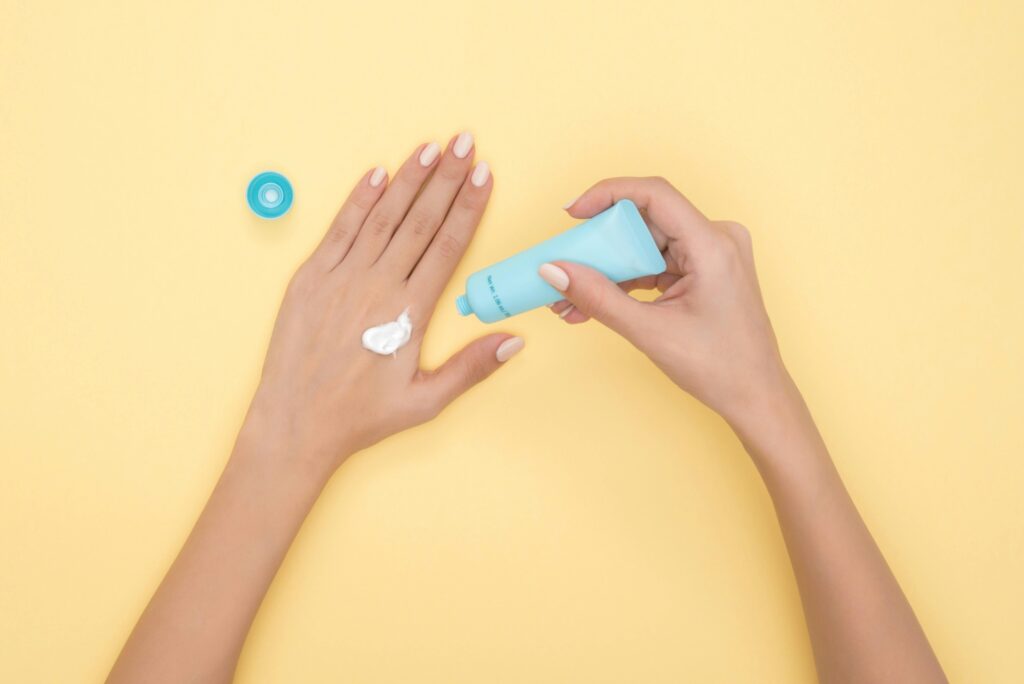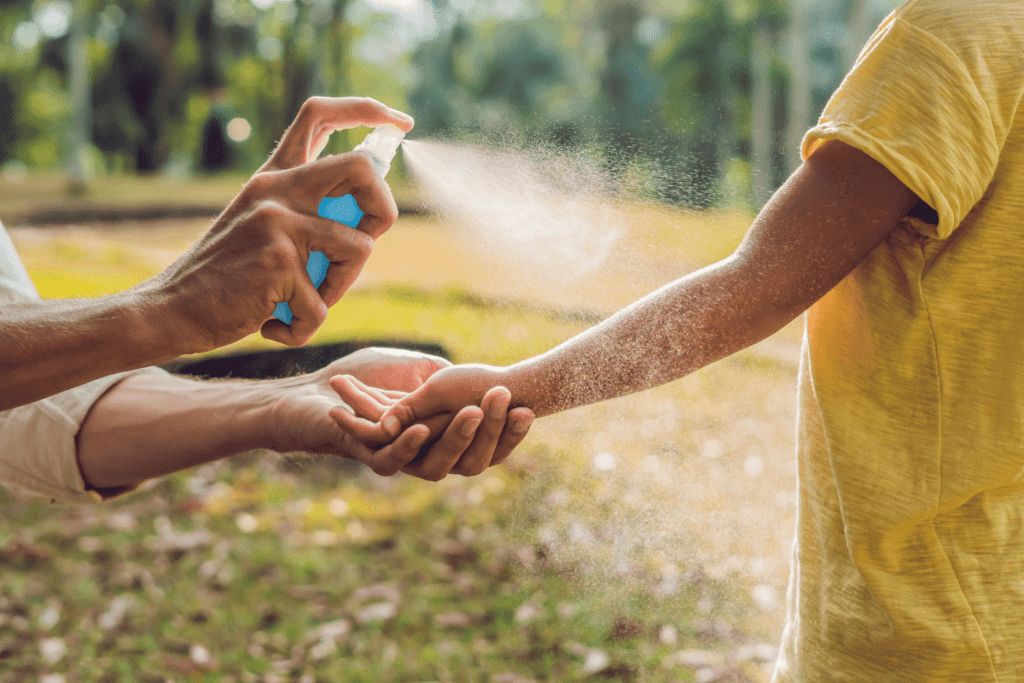As the weather warms up, many of us are looking forward to another fun summer soaking up the sun in parks, on the water, and in the back country.
Summer sun calls for diligent protection, and shielding our skin from harmful UV rays. But are we getting burned by toxic chemicals in our sunscreen and packaging instead? It’s alarming to think that the products we rely on for safety could potentially expose us to hormone-disrupting chemicals!

Sun damage poses real harms
It can feel great to soak up some rays, but sun protection is crucial to protecting ourselves from skin cancers like melanoma. Advocates are raising the alarm that increasing numbers of young people, and men, who are less likely to practice sun safety or use sunscreen, are being diagnosed with skin cancer as a result of sun exposure. In 2024, the number of people diagnosed with skin cancers rose 17 per cent from the previous year, a worrying trend.
Unfortunately, it can be challenging to discern whether a sunscreen is truly safe. Buzzwords like “natural” or “hypoallergenic” can be misleading, as there are no standardized regulations defining these terms in the sunscreen industry. It’s crucial to look beyond the marketing claims and scrutinize the actual ingredients list.
Sunscreen is a summer essential, yet it can contain potentially harmful chemicals that can damage our health and the environment. It can also contain ingredients that can interact with the other products we are using, adding more complexity to the already confusing task of finding safer products!
Fortunately, there are safer alternatives available that allow you and your loved ones to enjoy this season to the fullest. Keep reading for our guide to enjoying the sunshine without compromising your health!
Harmful Ingredients in Sunscreen
Many conventional sunscreens on the market contain ingredients that can be detrimental to our health. Some harmful chemicals commonly found in sunscreen products are:
- Oxybenzone: This chemical is frequently used as a UV filter in sunscreens and has been linked to hormone disruption, allergic reactions, and even coral reef damage. Oxybenzone is also one of our Toxic Ten chemicals to avoid in skincare products.
- Octinoxate: Often found alongside oxybenzone, octinoxate has also been associated with hormone disruption and adverse effects on marine ecosystems.
- Other harmful chemicals to avoid include: homosalate, octisalate, and octocrylene. Homosalate has the ability to interfere with the hormones estrogen, androgen, and progesterone, and it also produces harmful byproducts. Octisalate has been found to penetrate the skin, and octocrylene is known to cause allergic reactions in many people.
Healthy Tips for Sun Protection
To protect yourself from potential harm from the summer sun, consider the following tips:
- Get physical: Dermatologists recommend covering up with a wide-brimmed hat, sunglasses, lightweight long sleeves and pants or skirts—physical sun protection allows you to avoid UV exposure, while using fewer products on your skin.
- Start with your ‘screen routine: Add sunscreen to your morning routine, and not just in the summer. It may not seem like it, but we are exposed to skin-harming UV year round.
- Look for mineral sunscreens that contain zinc oxide or titanium dioxide as active ingredients. These mineral-based compounds create a physical barrier, reflecting and scattering UV rays away from the skin, without penetrating or disrupting the body’s hormone balance.
- Broad-spectrum protection: Choose sunscreens with SPF between 30-50 and ensure that it provides broad-spectrum protection against both UVA and UVB rays.
- Watch out for Vitamin A (in the form of retinol, retinyl palmitate, Alpha Hydroxy Acid): Vitamin A is an antioxidant that is believed to slow skin aging, but it may speed the development of skin tumors and lesions when applied to the skin in the presence of sunlight.
- Be mindful of timing: Try to limit time in the sun between 10am and 2pm, when the sun is at its most intense.
- Choose fragrance-free products: choose sunscreens that do not contain “fragrance/parfum.” Unscented products can be misleading, as they can still contain masking agents that neutralize their smell.
Remember to reapply sunscreen every two hours, even if you are using sweat/water-resistant or high SPF sunscreen. This ensures continuous protection against the sun’s rays.
Stay tuned for more tips to safely enjoy summer. Next up? Safer bug protection!









